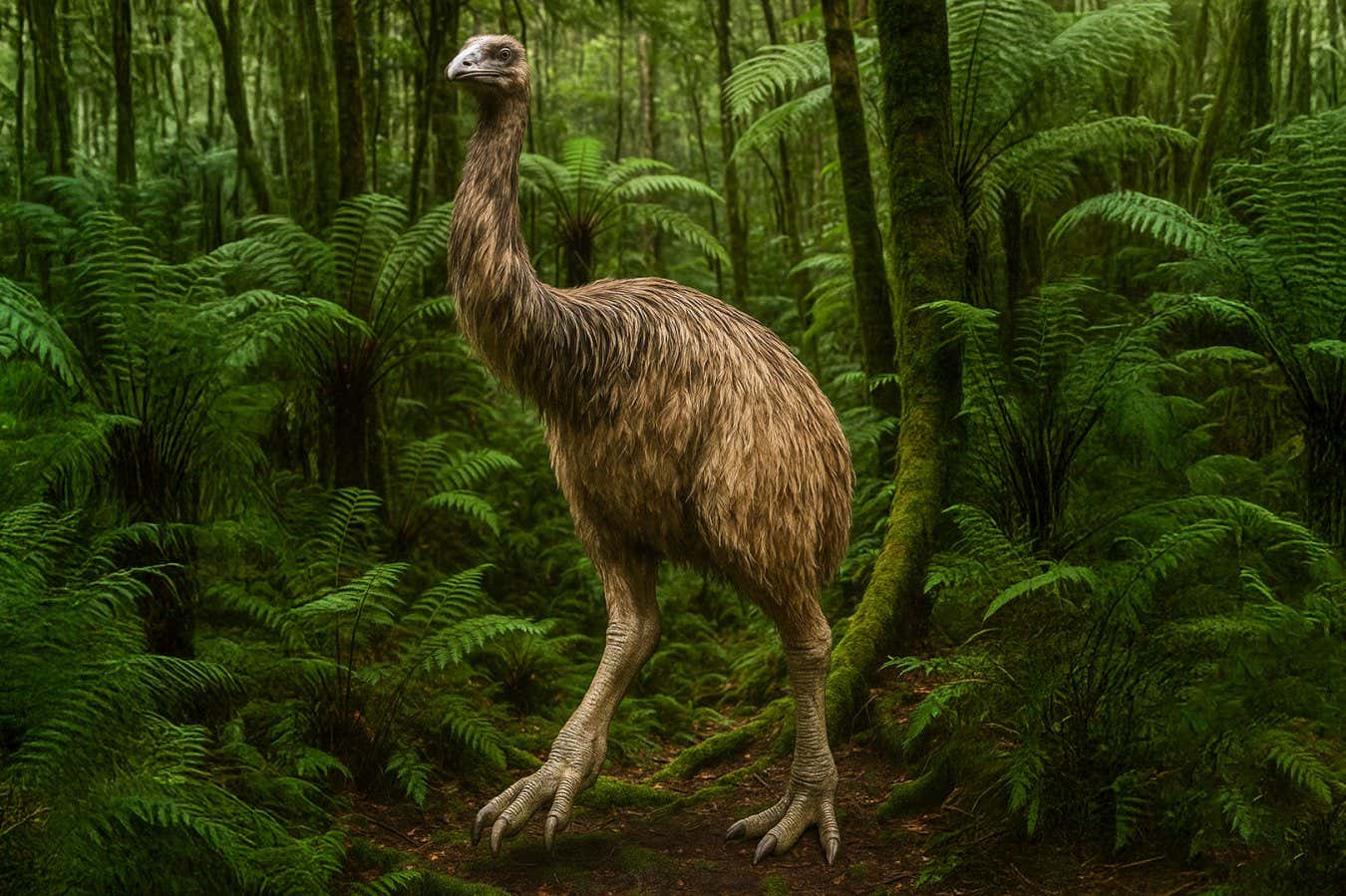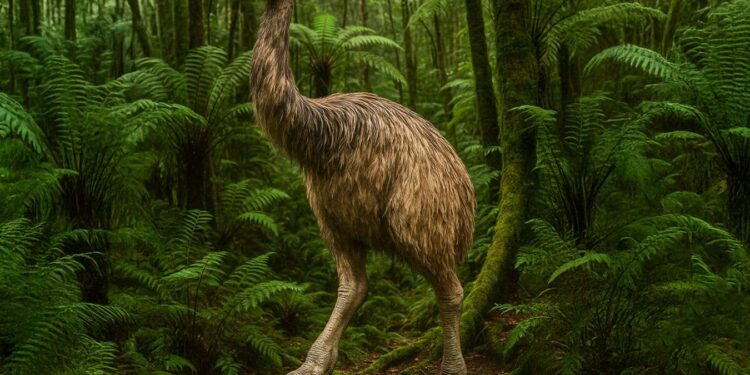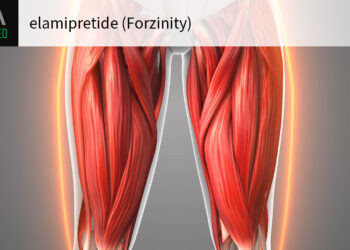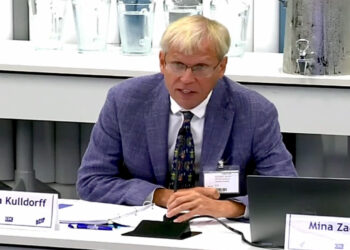
An artist’s impression of the moa, one of the largest extinct birds
Christopher Klee/Colossal Biosciences
Colossal Biosciences has announced plans to “de-extinct” the New Zealand moa, one of the world’s largest and most iconic extinct birds, but critics say the company’s goals remain scientifically impossible.
The moa was the only known completely wingless bird, lacking even the vestigial wings of birds like emus. There were once nine species of moa in New Zealand, ranging from the turkey-sized bush moa (Anomalopteryx didiformis) to the two biggest species, the South Island giant moa (Dinornis robustus) and North Island giant moa (Dinornis novaezealandiae), which both reached heights of 3.6 metres and weights of 230 kilograms.
It is thought that all moa species were hunted to extinction by the mid-15th century, following the arrival of Polynesian people, now known as Māori, to New Zealand sometime around 1300.
Colossal has announced that it will work with the Indigenous Ngāi Tahu Research Centre, based at the University of Canterbury in New Zealand, along with film-maker Peter Jackson and Canterbury Museum, which holds the largest collection of moa remains in the world. These remains will play a key role in the project, as Colossal aims to extract DNA to sequence and rebuild the genomes for all nine moa species.
As with Colossal’s other “de-extinction” projects, the work will involve modifying the genomes of animals still living today. Andrew Pask at the University of Melbourne, Australia, who is a scientific adviser to Colossal, says that although the moa’s closest living relatives are the tinamou species from Central and South America, they are comparatively small.
This means the project will probably rely on the much larger Australian emu (Dromaius novaehollandiae). “What emus have is very large embryos, very large eggs,” says Pask. “And that’s one of the things that you definitely need to de-extinct a moa.”
Colossal previously announced what it called the “de-extinction” of the dire wolf, a claim disputed by outside experts because the animals are grey wolves with a handful of modified genes. Pask says this won’t be the case with the moa project and there will be “orders of magnitude” more DNA edits.
“The difference here with the moa is it really is going to be properly trying to re-engineer the moa back,” he says. “There will be no one who can question whether this is a moa when that animal eventually gets re-hatched back into our world. It will be a recreated or re-engineered moa at the end of the process.”
Exactly where these animals will reside is unclear. Mike Stevens at the Ngāi Tahu Research Centre says his organisation and the local Māori community will need to clearly understand the “viability and morality” of Colossal’s work as it progresses. “Once we have done so, we can fully consider where and how any ‘Colossal moa’ might be located,” he says. “That in itself raises a series of fascinating practical and moral questions. But we cannot unpack them in any depth until we have carefully considered other factors – and, of course, the technology proves itself.”
But Philip Seddon at the University of Otago, New Zealand, says that whatever Colossal produces, it won’t be a moa, but rather a “possible look-alike with some very different features”. He points out that although the tinamou is the moa’s closest relative, the two diverged 60 million years ago.
“The bottom line is that Colossal’s approach to de-extinction uses genetic engineering to alter a near-relative of an extinct species to create a GMO [genetically-modified organism] that resembles the extinct form,” he says. “There is nothing much to do with solving the global extinction crisis and more to do with generating fundraising media coverage.”
Pask strongly disputes this sentiment and says the knowledge being gained through de-extinction projects will be critically important to helping save endangered species today.
Jamie Wood at Adelaide University, Australia, says he thinks the project will offer some “interesting new insights into moa’s biology and evolution”. But he says if the same research path is pursued as that of the dire wolf project, then Colossal may have a “hard time persuading people that the results of this process could be regarded as moa”.
“They may superficially have some moa traits, but are unlikely to behave as moa did or be able to occupy the same ecological niches, which will perhaps relegate them to no more than objects of curiosity,“ says Wood.
Topics:
Source link : https://www.newscientist.com/article/2487550-colossals-plans-to-de-extinct-the-giant-moa-are-still-impossible/?utm_campaign=RSS%7CNSNS&utm_source=NSNS&utm_medium=RSS&utm_content=home
Author :
Publish date : 2025-07-09 11:08:00
Copyright for syndicated content belongs to the linked Source.














